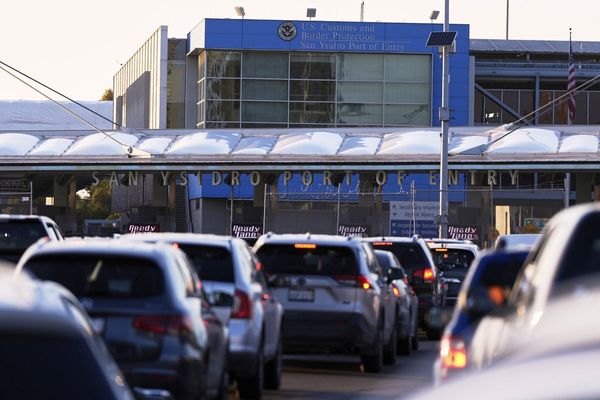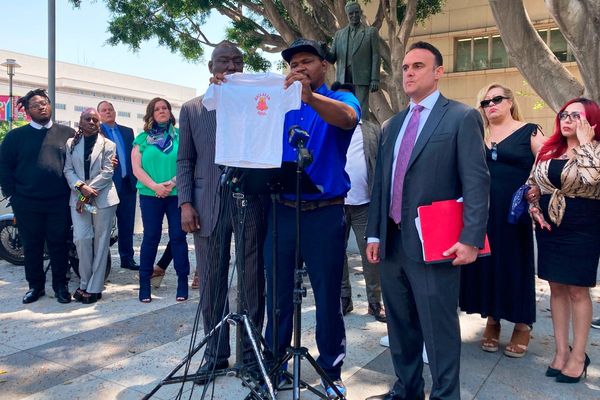
At 09:37 am ET, the Dow Jones Industrial Average was down 261.12 points, or 0.84%, at 30,720.21, the S&P 500 was down 42.68 points, or 1.12%, at 3,776.12, and the Nasdaq Composite was down 177.55 points, or 1.58%, at 11,087.17.
Over 90% of S&P 500 companies were in the red today as the largest surge in consumer prices since 1981 showed that a peak in inflation may still be out of reach.
Declining issues outnumbered advancers for a 5.37-to-1 ratio on the NYSE and for a 5.23-to-1 ratio on the Nasdaq.
The S&P index recorded one new 52-week high and 39 new lows, while the Nasdaq recorded two new highs and 136 new lows.
The Labor Department's report showed the Consumer Price Index (CPI), which tracks the prices that urban consumers spend on a basket of goods, rose in June on both a monthly and annual basis by 1.3% and 9.1%, respectively.
Economists polled by Reuters had forecast the monthly CPI to increase by 1.1% and the annual figure by 8.8%. The so-called "core" CPI, which excludes volatile food and energy prices, rose by a more-than-forecast 5.9% year-on-year.
"Higher-than-expected inflation is just going to mean that the Fed is going to have to continue to increase policy rates," said Dave Grecsek, managing director of investment strategy and research at Aspiriant.
"The Fed has been pretty clear in terms of conveying the expectation that they're going to continue to move short-term rates rapidly higher, so this does not really change that too much. If we see another few months of greater-than-expected inflation, that might change the Fed's course."
The 40-year-high inflation cemented the case for 75 basis points interest rate hike later this month. Investors now expect terminal rate at 3.60% by December 2022, up from 3.41% before the data.
As central banks move to aggressively raise borrowing costs to stamp out runaway inflation, fears of an economic downturn have escalated, sparking one of the worst Wall Street selloff in decades in the first half of the year.
US Treasury yields jumped after the data, which comes ahead of the second-quarter earnings reports from JPMorgan Chase & Co and Morgan Stanley on Thursday.
Their reports will provide an early glimpse into how companies are coping with rising costs, with investors also closely watching profit forecasts to gauge the likelihood of a recession.
Comments on CPI
“The June CPI release was an ugly print, no getting around it," said Cliff Hodge, chief investment officer at Cornerstone Financial. “The Fed has no choice but to follow through on a more aggressive path, which raises the probability of recession next year."
“Clearly we’re not out of the inflation woods yet," said Mike Loewengart, managing director of investment strategy at E*Trade from Morgan Stanley. “Another three-quarter percent hike from the Fed is pretty much a forgone conclusion at this point, and we’re likely in for a bumpy ride in the market."
“The only option available to the Fed is to slow economic growth enough to bring domestic demand down to meet constrained supply -- possibly tipping the US into recession," said Richard Flynn, managing director of Charles Schwab UK.
“Inflation keeps heating up, defying expectations for a peak to be reached," said Seema Shah, chief global strategist at Principal Global Investors. “We see rates moving to 4.25% next year as the Fed desperately attempts to recover from its earlier erroneous inflation read."
“Every month we wait for it to peak and are getting disappointed," said Neil Birrell, chief investment officer at Premier Miton Investors. “Core inflation is the root of the problem, and this probably confirms a 75bps move by the Fed at the next meeting."
Bank of America Corp. economists forecast a “mild recession this year" in the US, saying services spending is slowing and high inflation is spurring consumers to pull back. The economists expect fourth-quarter US gross domestic product to decline 1.4% from a year earlier, followed by a 1% increase in 2023.







